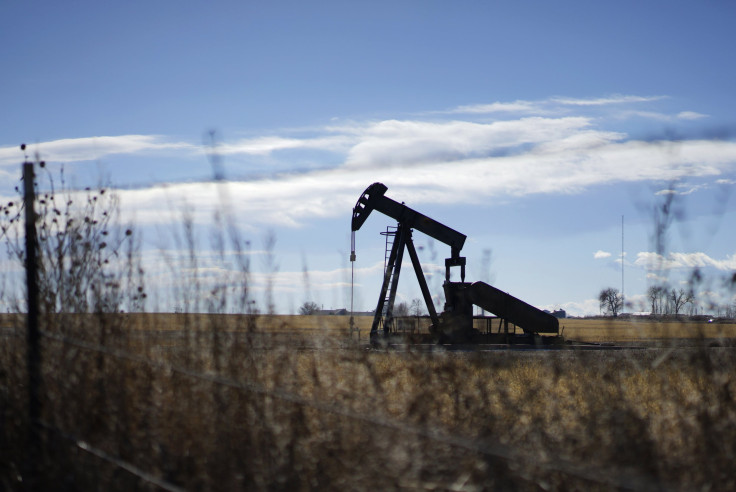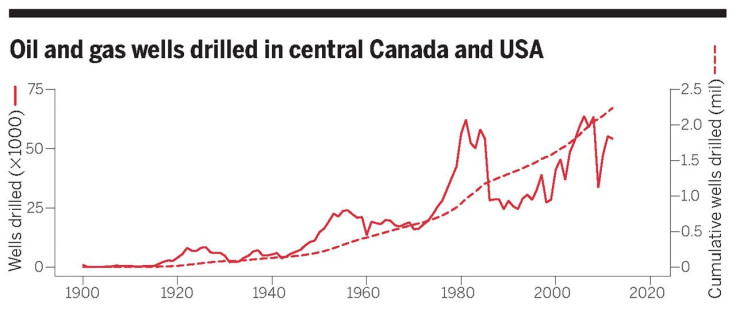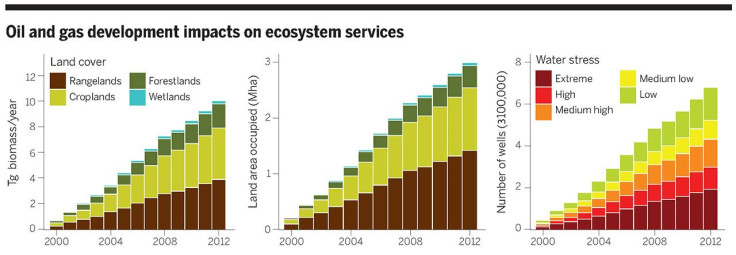Oil And Gas Drilling Is Consuming Millions Of Acres Of US Farmland: Study

As oil and gas drilling ramps up in the central U.S. and Canada, the region is losing an increasing amount of cropland, ranches and forests to industrial activities. In recent years, huge swaths of the Great Plains have given way to well sites, oil pads, parking lots and gravel roads that service the energy industry, researchers say.
Advances in drilling technologies, including horizontal drilling and fracking, have enabled North American producers to dramatically scale up oil and gas production. About 50,000 new wells on average have been drilled each year since 2000 in the central states and provinces, more than in previous decades. As a result, about 7 million acres of land was lost to energy development between 2000 and 2012, a study published Friday in the journal Science found.

“Although this [oil and gas] development brings economic benefits and expectations of energy security, policy and regulation give little attention to trade-offs in the form of lost or degraded ecosystem services” -- a category that includes food production, biodiversity and wildlife habitat, according to the team of researchers from Midwestern and Western universities.
Roughly half the acreage lost over that 12-year period was rangeland. Another 40 percent was agricultural land and 10 percent was forests, while a tiny fraction of the total was wetland. Researchers estimated that the amount of crop production lost to drilling totaled 130 million bushels of wheat, or about 6 percent of the wheat produced in the region in 2013.

The research team assessed the effects of oil and gas development on crop production, land change and water use in 11 central U.S. states and three Canadian provinces. They combined high-resolution satellite data of vegetation with energy industry data and information about historical and present-day locations of oil and gas wells in the region.
“Before this work, little has been done in examining these types of data and their relations with ecosystem services at broad scales,” researchers wrote in the report.
Steve Running, one of the authors and a forest ecology professor at the University of Montana in Missoula, said the purpose of the study was not simply to point out that a large portion of land has been de-vegetated. Instead, researchers aimed to project how accelerated drilling could affect farms and ranches several decades into the future, Midwest Energy News reported. On average, the development of each new oil and gas well results in the clearing of 10 acres of vegetation, including grass, crops and trees.
“This is more about the accumulating effect through time of this pace of drilling if there is no active reclamation done on well areas after they have been depleted,” Running told the publication.
© Copyright IBTimes 2024. All rights reserved.





















